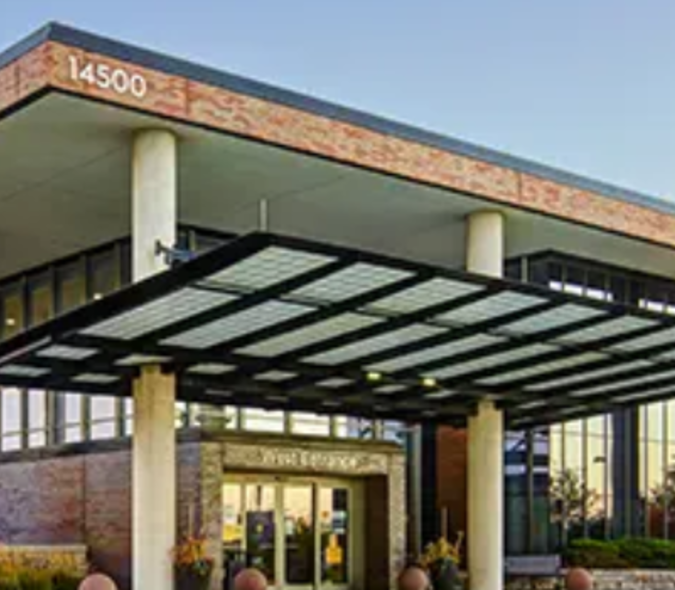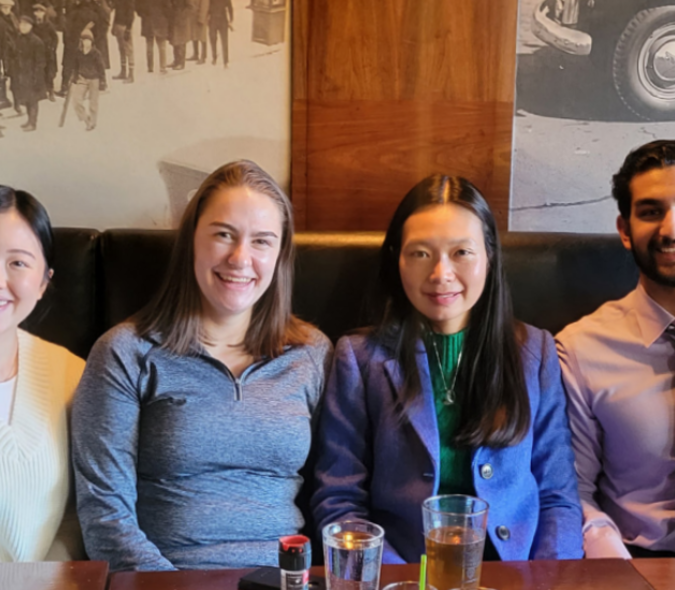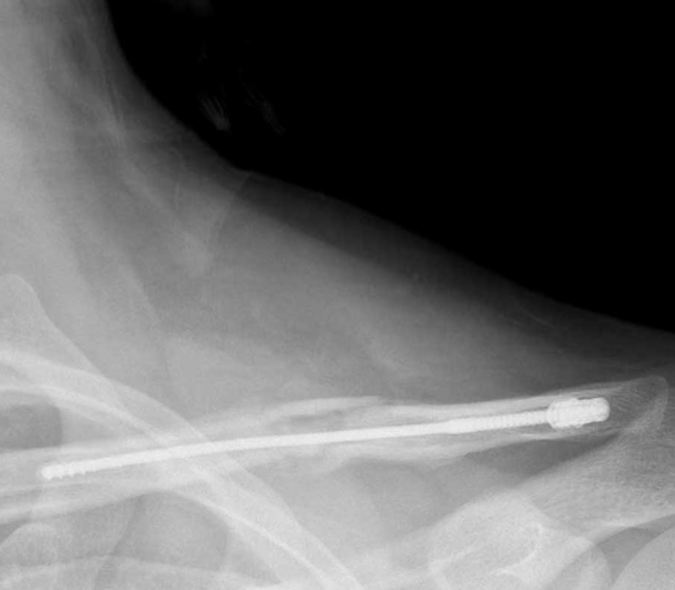
Female Representation Draws Erica Gauger, MD, to the U of M Orthopedic Surgery Residency Program
Erica Gauger, MD, was first drawn to medicine while studying anatomy as a part of her undergraduate psychology degree at Illinois Wesleyan University.
“I realized it was more exciting than what I was majoring in,” she recalls.
Upon graduation, she returned home to attend the University of Minnesota Medical School, and did an orthopedic rotation during her third year. Although she hadn’t given much consideration to orthopedics or surgery, she found that she enjoyed the patients, pathology, and working with her hands. This sparked her interest, and after completing more orthopedic rotations, her passion was solidified.
A few things provoked her to stay in Minnesota for residency. For one, she liked that it would keep her close to family, and she had built solid relationships with the Department of Orthopedic Surgery faculty and residents during medical school. Another big draw was the long history of female faculty in leadership positions and above average female representation in residency.
“Women are still underrepresented in orthopedic surgery, and the department has a tradition of females in leadership roles, as attendings, and as residents,” she says. “I interviewed at residencies that had never had a female resident, or had one that ended up leaving, and it felt like they didn't feel comfortable having a female in the program. Gender just seemed like a nonissue at the U of M.”
An article by Assistant Professor Caitlin Chambers, MD, published in the Journal of Bone and Joint Surgery, found that 14 percent of orthopedic residents were female in the 2016-2017 academic year, the lowest of any surgical specialty. In contrast, the Department of Orthopedic Surgery Residency Program has trained 25 percent females over the last decade. Similarly, the department surpasses U.S. averages for women in positions of leadership. Twenty percent of the department’s professors are female, while the national average is nine percent. Eighteen percent of associate professors and 37 percent of assistant professors are female, while the national averages are 15 and 20 percent respectively. Starting with former Department Chair, Roby Thompson Jr., MD, in the eighties, male faculty have advocated for a more diverse group of residents and faculty.
“Dr. Terence Gioe of the VA was very supportive of me going into orthopedics and helped me throughout the years. It was very encouraging to be supported not only by female mentors, but also men within the department,” she recalls.
While at the VA, she also met Professor Emeritus, James House, MD, known for his contagious enthusiasm for medicine. Head of hand surgery at the U for many years, House was ecstatic to learn that Gauger also wanted to pursue the subspecialty. Another hand surgeon, Ann Van Heest, MD, professor, vice chair of education, and residency program director, mentored her around decisions related to fellowship and practice. Initially, though, Gauger was hesitant to become a hand surgeon.
“I wanted to fight the stereotypes, because a lot of females in orthopedics go into hand surgery,” she explained.
While there’s not a clear reason the trend exists, a study published in Clinical Orthopaedics and Related Research found that 47 percent of female orthopedists had a primary hand subspecialization. Gauger hypothesizes that there are a few factors at play.
“Hand surgery certainly is a little less physical than some of the other subspecialties, which may contribute,” she says. “Another big draw for both men and women is the typical lifestyle of a hand surgeon. The vast majority of the surgeries I do are on an outpatient basis, so I don’t have many patients in the hospital to round on. I work primarily at a surgery center which is really efficient, which helps make it easier to have a good work/life balance and still be productive.”
Gauger was stimulated to read and study more about hand due to the variety of surgeries. The subspecialty encompasses everything from procedures that require fine and delicate skills to fracture fixation and joint replacements. Now, she does everything from fixing fractures, which aren’t usually delicate, to repairing small nerves and arteries under the microscope. For Gauger, another plus is that she rarely performs any long 8-10 hour surgeries, since a typical procedure takes about an hour. Since she likes to stay moving, the wide array of cases is a bonus.
After she graduated from residency in 2016, Gauger completed a hand surgery fellowship at the University of New Mexico, Albuquerque. Now, she has built a practice at TRIA-Woodbury and takes call at Regions Hospital in St. Paul. Since Regions is a Level I trauma center, she sees hand trauma, like reattaching a severed finger. At TRIA, she sees more common hand conditions, such as trigger finger, carpal tunnel syndrome, or simple wrist and finger fractures.
“I really like that sort of stuff,” she says. “Carpal tunnel syndrome, for example, is really bothersome to people, and it has a relatively easy fix. It’s great to be able to perform a surgery that allows people to feel much better and move forward with their lives. I find that very rewarding.”
Gauger also enjoys educating residents and fellows at Regions and TRIA.
“Educating somebody keeps you on your toes, because you have to be able to explain why you’re making certain decisions,” she says. “It’s fun to field questions because it makes you think.”
She’s also involved in educating females in high school and medical school that are interested in a career in orthopedics. The Department of Orthopedic Surgery hosts an annual workshop through the Perry Initiative that gives women hands-on exposure to various orthopedic techniques and an opportunity to rub shoulders with female orthopedic surgeons. Studies have suggested that early exposure to orthopedics may increase the likelihood of women choosing the specialty, a cause Gauger is passionate about.
Gauger’s orthopedic surgery residency at the U impacted her life and career in many ways. For one, she met and married co-resident Erich Gauger, MD, because of completing residency here. She also appreciates the collaboration and relationships built across the Twin Cities.
“Hand surgery is particularly collaborative between sites and even employers, which is a nice way to practice and you don't find that a lot of places,” she says. “To be able to reach out to surgeons practicing in other health systems for advice is a unique thing. This is partly because I trained at the U and have mentors at these different places, but it is also just the environment that has made people willing to communicate and collaborate, which is unique.”



